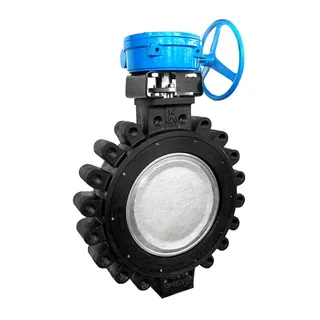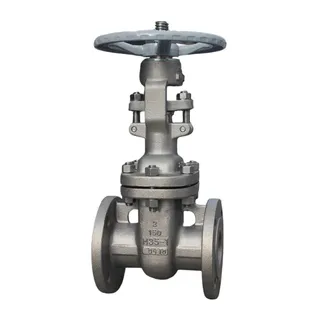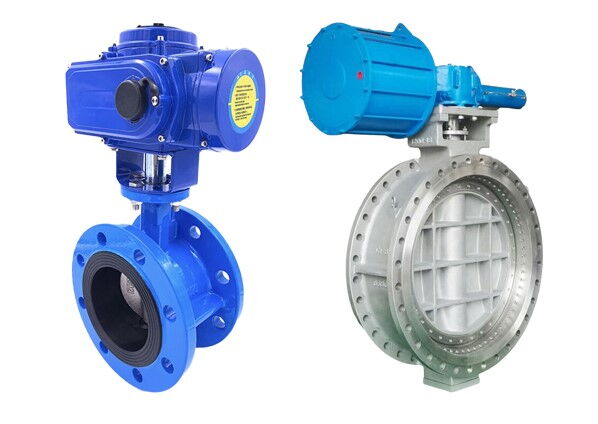
Butterfly valves, essential in industrial pipelines for fluid regulation and control, utilize either soft or hard sealing mechanisms, each offering distinct benefits for specific environments. Soft seal butterfly valves, with their combination of metal and elastic non-metallic materials, excel in low-pressure, room-temperature applications, providing excellent sealing performance but limited by wear, aging, and temperature resistance. On the other hand, hard seal butterfly valves, made from metal or hard materials, are better suited for high-temperature, high-pressure, and corrosive environments, offering superior wear resistance and a longer service life, although at the cost of slightly lower sealing performance. This article explores the structural differences, performance, advantages, and application scenarios of both valve types, providing guidance for selecting the appropriate butterfly valve based on temperature, pressure, medium characteristics, and sealing requirements.
Butterfly valves, widely used in industrial pipelines for regulation and control, are designed with different sealing mechanisms that directly impact their performance and application range. The two main types of sealing methods for butterfly valves are soft seal and hard seal, each with its unique advantages, disadvantages, and suitability for specific environments. This article provides a detailed comparison of these two sealing methods, exploring their structure, performance, application environments, pros, and cons, to aid in selecting the appropriate butterfly valve type.
Soft seal butterfly valves use a sealing method that combines metal and elastic non-metallic materials. Specifically, one side of the sealing pair is made of metal (e.g., steel), while the other side uses an elastic non-metallic material (such as rubber, PTFE, etc.). This structure provides excellent sealing performance, especially in low-pressure and room-temperature environments, achieving a zero-leakage effect. However, soft seal butterfly valves have limitations, particularly in high-temperature, high-pressure, and corrosive media applications, where the soft sealing material may degrade and affect its lifespan and sealing performance.
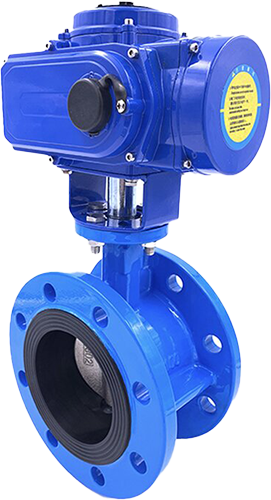
Good Sealing Performance: The elastic properties of the soft sealing material allow it to effectively accommodate installation errors of the valve seat, ensuring a strong seal.
Zero Leakage: In standard operating conditions, soft seal butterfly valves can achieve complete sealing, preventing fluid leakage.
Low Friction: The use of elastic materials reduces friction, allowing smoother operation and quicker opening and closing.
Poor High-Temperature Resistance: Soft sealing materials cannot withstand excessively high temperatures, typically suited for room or low-temperature environments. In high-temperature settings, the material may deform or fail.
Prone to Wear and Aging: Over time, the soft sealing material is susceptible to wear and aging due to media erosion, which gradually reduces sealing effectiveness.
Shorter Service Life: The physical properties of soft sealing materials result in a relatively shorter lifespan, especially under harsh operating conditions.
Soft seal butterfly valves are ideal for low-pressure, room-temperature, and non-corrosive media environments. Common application fields include:
Ventilation and Dust Collection: Used for bidirectional opening and flow regulation.
Water Treatment Industry: Used for flow regulation and control.
Light Industry: Industries like food and pharmaceuticals, where high sealing performance is crucial.
Oil and Chemical Industry: Suitable for low-pressure medium flow control.
Hard seal butterfly valves use metal or other hard materials for both sides of the sealing pair, such as steel, copper, alloy steel, graphite, etc. Compared to soft seal valves, hard seal valves have relatively lower sealing performance but offer higher temperature resistance, wear resistance, and stronger mechanical properties, making them more suitable for high-temperature, high-pressure, and corrosive media environments.
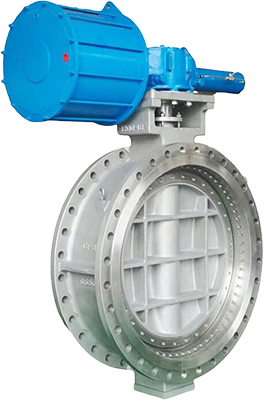
Excellent High-Temperature Resistance: Hard seal butterfly valves, made from metal materials, can withstand higher temperatures, making them ideal for high-temperature applications.
Excellent Wear Resistance: The metal sealing pair provides excellent wear resistance, maintaining stable performance over long-term use.
Superior Mechanical Properties: The metal materials give the valve strong compressive strength and corrosion resistance, making it suitable for harsh environments.
Long Service Life: Due to its durable sealing materials and wear resistance, the service life of hard seal butterfly valves is much longer in high-temperature and high-pressure conditions compared to soft seal valves.
Relatively Poor Sealing Performance: The sealing performance of hard seal valves is not as good as soft seal valves, and although they meet most operational requirements, they may not achieve zero leakage in extreme conditions.
High Precision Requirements for Manufacturing: Since the sealing pair is typically made of metal, it requires high manufacturing precision, making the production process complex and costly.
Need for High-Strength Hardening Treatment: Hard seal butterfly valves often require hardening treatments to ensure the sealing surfaces are properly matched and avoid sealing failure.
Hard seal butterfly valves are suitable for high-temperature, high-pressure, and highly corrosive media. Common application fields include:
Heating Industry: For handling high-temperature hot water and steam flow.
Gas Industry: For regulating high-pressure gases like natural gas and coal gas.
Chemical Industry: For handling corrosive media such as acids and alkalis.
Oil Industry: For petroleum transportation and high-pressure oil flow control.
The primary structural difference between soft seal and hard seal butterfly valves lies in the sealing pair materials and manufacturing methods:
Soft Seal Butterfly Valve: One side of the sealing pair is metal, and the other side is an elastic non-metallic material. Soft seal valves are typically designed with a centerline type, making them suitable for low-pressure and room-temperature environments.
Hard Seal Butterfly Valve: Both sides of the sealing pair are made of metal materials. Common designs include single eccentric, double eccentric, or triple eccentric valves, making them suitable for high-temperature, high-pressure, and corrosive environments.
|
Feature |
Soft Seal Butterfly Valve |
Hard Seal Butterfly Valve |
|
Sealing Performance |
Good, zero leakage achievable |
Relatively poor, suitable for lower sealing requirements |
|
Temperature Adaptability |
Suitable for room and low temperatures |
Suitable for low, high, and room temperature environments |
|
Pressure Adaptability |
Suitable for low and atmospheric pressure |
Can handle medium to high pressure, even up to 35 MPa |
|
Wear Resistance |
Poor, prone to wear |
Good, resistant to long-term wear |
|
Service Life |
Shorter, especially under harsh conditions |
Longer, ideal for high-temperature and high-pressure environments |
|
Application Areas |
Ventilation, dust collection, water treatment, light industry |
Heating, gas, petroleum, chemicals, high-pressure, and high-temperature environments |
Both soft seal and hard seal butterfly valves have distinct advantages and disadvantages, making them suitable for different operating conditions. When selecting a butterfly valve, the following factors must be considered:
Operating Temperature and Pressure: For environments requiring high temperature and pressure, hard seal butterfly valves are the better choice. Soft seal valves are more appropriate for room temperature and low-pressure applications.
Medium Characteristics: If the medium is highly corrosive, hard seal butterfly valves provide better durability and sealing performance. Soft seal valves may not perform well in certain corrosive media.
Sealing Requirements: Soft seal butterfly valves offer higher sealing performance, making them ideal for applications with stringent sealing requirements.
Depending on the operating conditions, soft seal and hard seal butterfly valves can complement each other to ensure equipment stability and long-term reliability.


